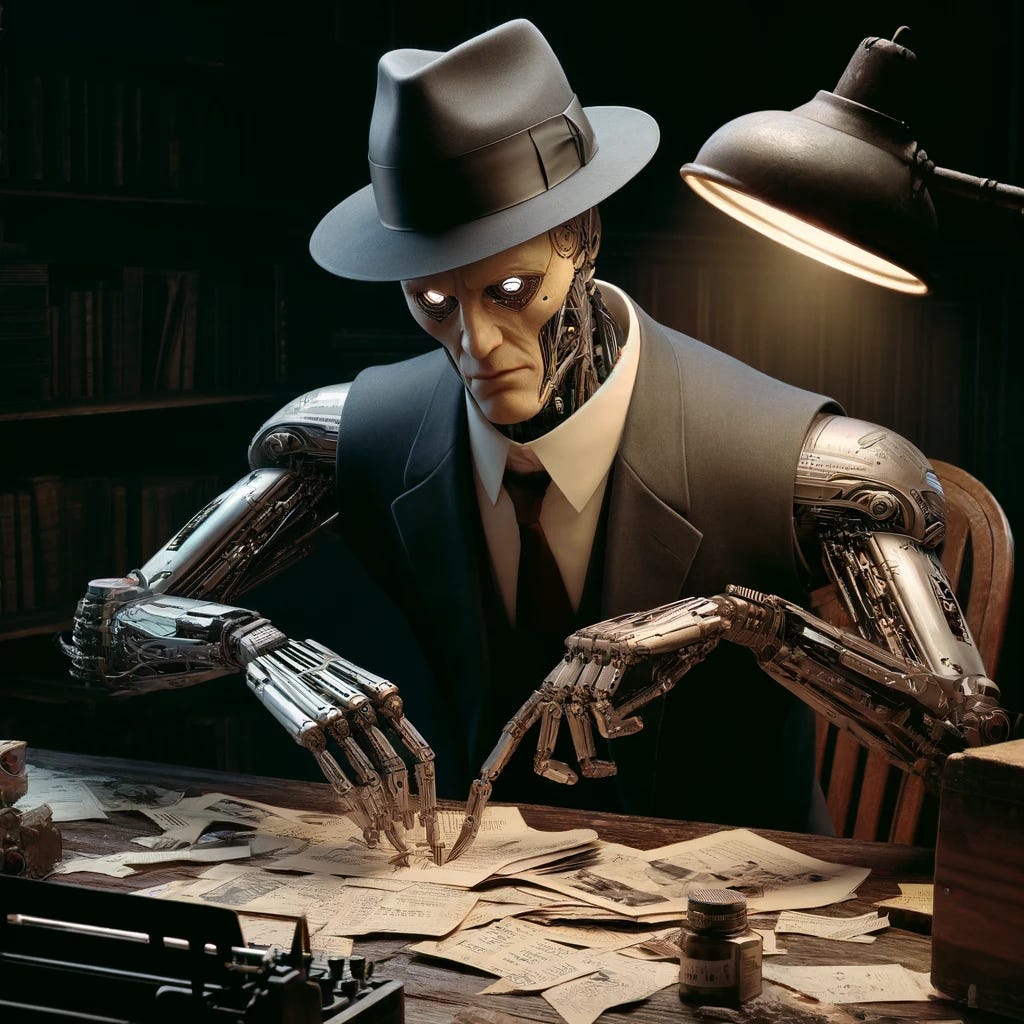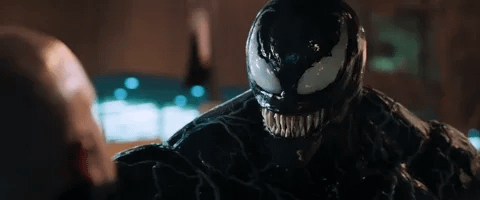The Modern ‘Cut-Up’
Why I Wrote My Last Short Film with ChatGPT (And Why It Wasn’t Creative Seppuku)
There’s a culture war raging between Big Tech and the creative community at large. OpenAI v. ScarJo was one recent skirmish. The latest has been artists protesting Meta’s AI policies that scrape their art on Instagram to train AI. That one has ruffled some feathers.
What happened? Back when ChatGPT came out in 2022, AI felt exciting. After years of AI hype, the tech had finally broken through to the public, and lay people who never paid attention to AI were suddenly becoming adopters. ChatGPT was useful, and kind of fun to play with.
Now, since the spate of controversies over the last year and a half, AI has more of an ominous ring in creative circles. Will it take over music? Video? Artistry itself? It’s starting to feel less like renaissance-making technology and more like the sticky black Venom goo that spreads uncontrollably and corrupts everything it touches. So which side are you on?
It’s hard to be simply pro or con AI. Each case needs its proper evaluation. I see the enormous potential of the tech, but I also see its obvious flaws, the insane hype, and the alarmist fears that it will threaten everything we care about.
In the end, I made a film using ChatGPT. But let’s rewind.
In college, I studied literature and one of my areas of interest was the Beat Movement, a movement in the 1950s that rejected mainstream values and embraced spirituality, sexuality, and drugs.
The Beats paved the way for the countercultural revolutions of the 60s, exploding open personal expression. Famous Beat figureheads were Jack Kerouac (author of On the Road), Allen Ginsberg, and Bill Burroughs.
Burroughs was probably the least famous of the three, but he popularized something interesting called the “cut-up method.” He would cut up text from random sources and rearrange it to form new expressions and poems. He was trying to disrupt linear narrative and traditional authorship.
Burroughs felt that physically cutting up and rearranging texts could reveal hidden meanings or connections. It could also help us escape the “word virus.” He was protesting a staid 50s culture of conservative ideals. To him, language was not only a tool for communication but also a way for those in power to control people. And the key to breaking out of that control was randomness.
You may be thinking that sounds strange. Randomness in the creative process? Isn’t the point of art to be intentional? To steer chaos into coherent narrative and meaning? Yes and no.
I think we find a good analogy in biology. Our most complex organs like our eyeballs have evolved through natural selection, i.e. through random mutations being continuously selected for by an environment. Randomness is the engine. The environment chooses whether that mutation is beneficial, and if it is, it will spread in the gene pool until it becomes the baseline. That sort of applies to us here.
OpenAI’s large language models like ChatGPT work by shuffling our ideas around. Consulting the model while I write a screenplay could help me introduce randomness and unpredictability. Burroughs did this manually with cut-ups, but clearly AI can do something similar on a larger scale with algorithms.
The point of cut-ups was to disrupt traditional narrative flows. So too can AI produce texts that defy traditional storytelling structures, creating surprising and innovative results. It’s remixing all the language out there to reveal new patterns or associations in the corpus that weren’t apparent before. It’s the cut-up on steroids.
Honestly, the joy I’ve had using ChatGPT didn’t come from its complexity. I wasn’t looking for something to meet the standard of a human. I was excited about the creative infusion of randomness. The remixability.
I’ve written collaboratively with other writers in the past, and it has been fruitful and enriching, but ultimately humans are humans. We tend to think in certain ways, especially if we come from the same culture.
As individuals we all think a little differently, but we can’t process at the level of a large language model. We’re tied to our human ways of thinking, and ultimately to the cultures from which we emerge.
We’re all subject to the same kind of “word virus,” especially in the film world where creatives will typically draw inspiration from the same film canon. Scorsese. Nolan. Spielberg. Fellini. Tarkovsky. Kurosawa. Call it the “film virus.” Even super avant-garde films are set within the greater human order. No filmmaker is an island.
But okay, let’s slow down. I see the objections coming in full force already. ChatGPT? Creative? The same thing that Big Tech is developing? How is that a wellspring of creativity? It’s number-crunching code. It’s cold, inhuman algorithms spewing out statistical probabilities. It doesn’t cure the word virus. It perpetuates it.
Yes and no.
Obviously, we’re in a time where AI use is provocative for many reasons. One of the big reasons is economic. People worry about job security in a time where AI is consistently framed in the media as a replacement for human jobs. This is a valid fear and I don’t mean to downplay it. I wrote a previous post about my stance on this.
Creatively, I’m not so sure the objections are meaningful. The beauty of the cut-ups wasn’t that they captured everything we care about in the arts. It was about a fresh infusion of something. ANYTHING.
At the end of the day, the humans were the meaning makers. Burroughs selected which cut-ups were interesting and discarded the rest. Curation was integral. He didn’t simply stick a bunch of cut-up newspapers into an envelope and send it to his editor. The cut-ups were a means to find new creative inroads in a time of stale, monolithic creativity in the mainstream.
Likewise, ChatGPT and other large language models offer SOMETHING. It’s not going to make the creative product for you A to Z. Image generators and video generators like Sora won’t simply replace people. They will offer tools and new media, which will live alongside purely human media. Like painting and photography. Like photography and film.
In fact, AI art may be a boon to human art. It might offer us reasons to make our art MORE HUMAN. This is especially true if ChatGPT will vomit up the most average version of our art.
This is exactly what media theorist Douglass Rushkoff describes in his experience using ChatGPT. When he used it for fun to see if it could drum up anything interesting for his graphic novel, he found it produced writing embarrassingly similar to what HE had already written.
If the AI looked all over the place and “averaged out” the most appropriate scene, it means that I was writing in a perfectly average way, myself. I had arrived at the same cliché as the machine!
The machine does indeed produce generic drivel. It can be creativity “averaged out.” But it also has spurts of random genius, stemming out of the chaos of numbers. Statistics can choke out creativity, but they can also revive it in ways if we use it strategically.
And the future of human-AI collaboration is only going to get more interesting. I’m guessing we’re going to have custom GPTs, each tailored to an individual and to specific creative purposes.
But let’s bring it full circle. The cut-ups were part of the Beat movement, which gave rise to hippie culture, which gave rise to modern tech culture. The tech revolution was forged with the DNA of free love, free expression, and well… drugs. Hallucinogenics were and still kind of are pivotal to the tech scene. Who else goes to Burning Man now but tech execs flying in on private jets?
And, funnily enough, the phrase that has caught on for language models making stuff up is “hallucinating.”
Hallucination is actually an important part of ChatGPT’s magic, and it’s also the hallmark of creative experimentation. It’s what pushed The Beatles out of the traditional sound of their early career into their more interesting later work.
The 1960s culture of experimentation gave rise to counterculture magazines like Whole Earth Catalog, which Steve Jobs read religiously and cited as a major inspiration. That’s the very DNA of Apple, the DNA of the iPhone (I wonder if Steve Jobs would have approved of the industrial crusher ad).
So yea. I consulted ChatGPT as I wrote my script for my short film “Lucky Socks.” The film is surreal and absurd. And it turns out AI can help achieve that effect pretty effectively.
But don’t get me wrong. It was never a simple copy and paste. ChatGPT threw a thousand things at me. I picked one and refined it. I did the curating, as a director should. And that’s the moral of this story.
So let me rehash the cliche. AI is a tool. Artists use tools. Wait, GPT4 can take the reins here:
Yeah, I know, cliche. But that’s pretty much what I was thinking.






